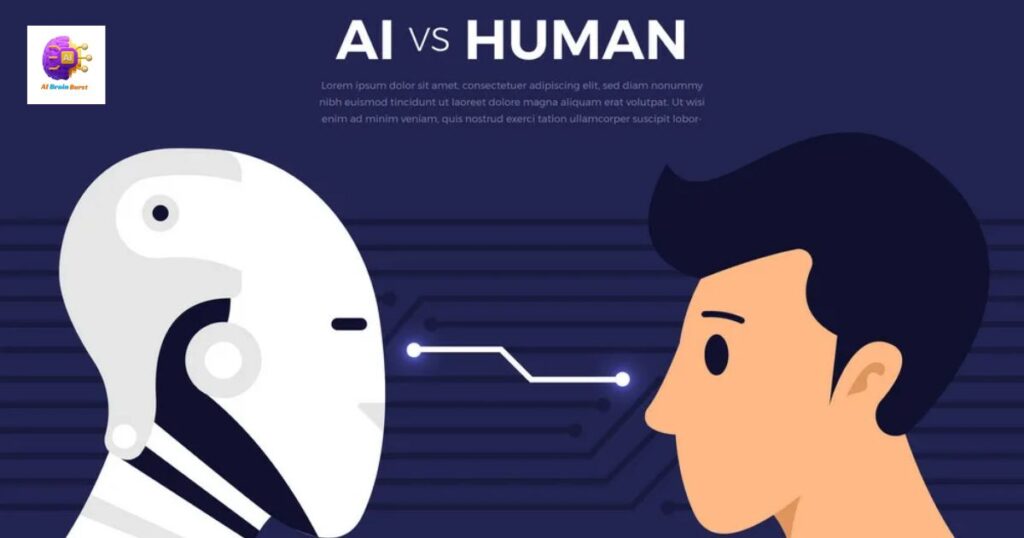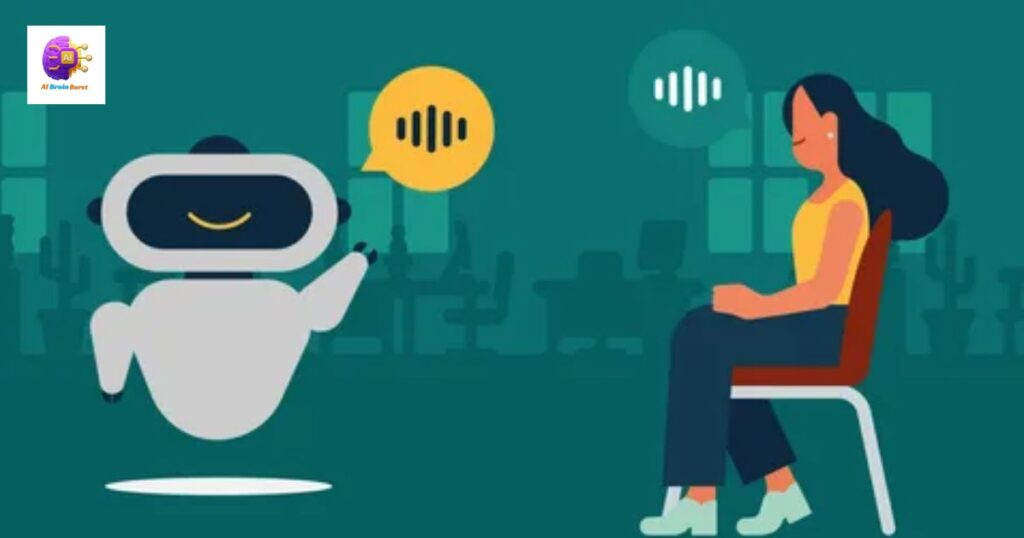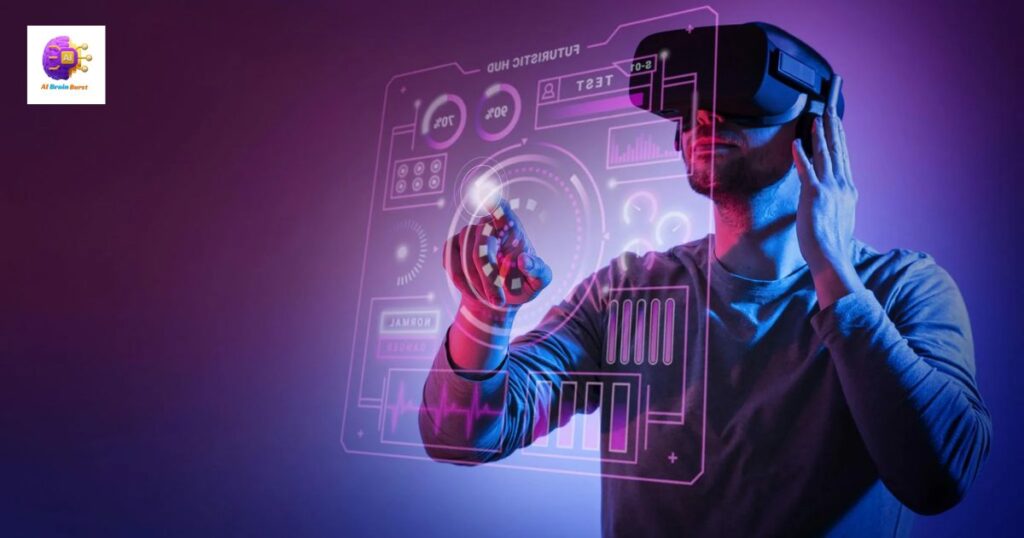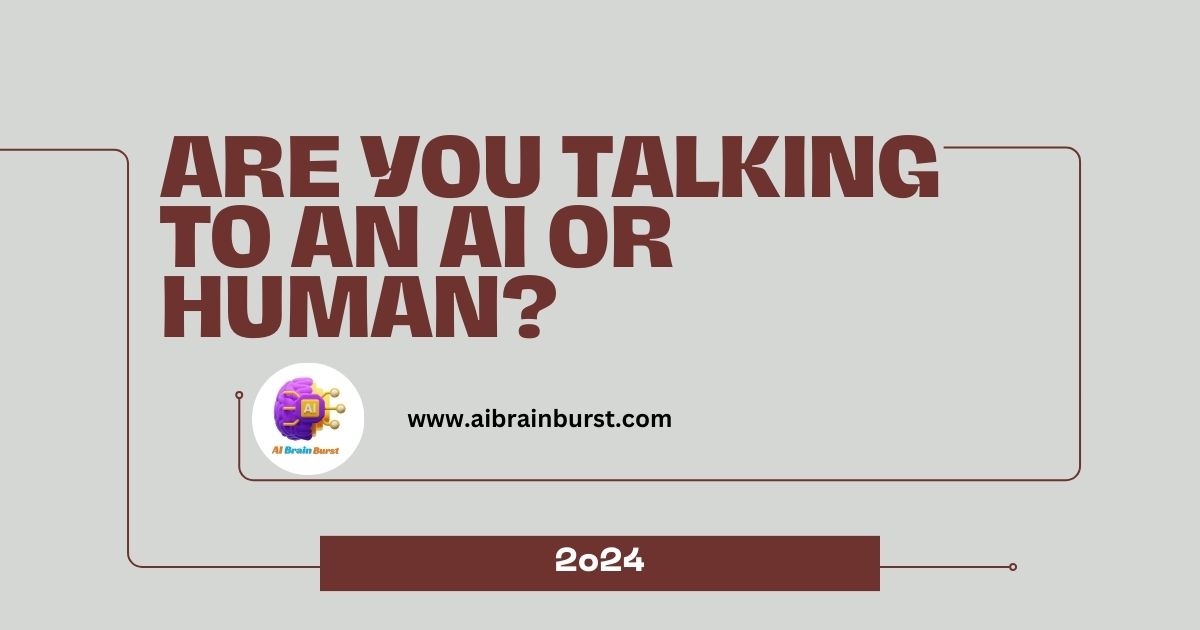Talking to an AI or human involves distinguishing between interactions with a machine and a real person. AI uses programmed responses and algorithms to simulate conversation. Humans offer genuine emotions and spontaneous reactions. Identifying the difference is crucial for understanding and trust.
Have you ever wondered if the person you’re chatting with online is actually a human or an AI? With technology advancing rapidly, it’s getting harder to tell the difference. Discover how to spot the signs and ensure you’re engaging with a real person. Dive into our guide to learn more. Are You Talking to an AI or Human? Find out now!
Are You Talking to an AI or Human? It’s a question more people are asking as AI technology improves. Chatbots and virtual assistants can mimic human conversation, but there are still ways to tell them apart. Knowing the difference helps in navigating digital interactions effectively.
The Rise of Conversational AI

The rise of conversational AI has revolutionized the way we interact with technology, from customer service chatbots to virtual personal assistants. These AI systems, like Deepnude Free Trial Apps, can understand and respond to human language, making our digital experiences more seamless and efficient. Conversational AI has become increasingly sophisticated, leveraging advancements in natural language processing and machine learning.
These technologies enable AI to handle complex queries, understand context, and even exhibit a semblance of emotional intelligence. As a result, businesses and individuals are adopting AI-driven communication tools for tasks ranging from customer support to personal productivity. This transformation is making interactions faster and more convenient, while also raising new questions about the boundaries between human and machine communication.
Development of Chatbots and Virtual Assistants
| Aspect | Details |
|---|---|
| Early Beginnings | The development started with simple rule-based systems in the 1960s, such as ELIZA. |
| Technological Advances | Improvements in natural language processing (NLP) and machine learning (ML) have been crucial. |
| Key Milestones | Siri (2011), Alexa (2014), and Google Assistant (2016) marked significant advancements. |
| Types of Chatbots | Rule-based, AI-driven, and hybrid models combining both approaches. |
| Capabilities | Handling customer inquiries, providing information, setting reminders, and performing tasks. |
| Popular Platforms | Facebook Messenger, Slack, WhatsApp, and standalone apps. |
| AI Techniques Used | NLP, ML, neural networks, deep learning, and reinforcement learning. |
| Customization | Businesses can tailor chatbots to specific needs and industry requirements. |
| Language Understanding | Ability to comprehend and generate human-like text responses in multiple languages. |
| Integration | Seamless integration with other systems like CRM, ERP, and IoT devices. |
| Challenges | Ensuring accurate understanding, handling ambiguous queries, and maintaining user privacy. |
| Future Trends | Enhanced emotional intelligence, better context awareness, and increased human-AI collaboration. |
| User Experience | Focus on creating more natural, intuitive, and engaging interactions. |
| Adoption Across Industries | Widespread use in customer service, healthcare, finance, retail, and education. |
| Regulatory and Ethical Issues | Concerns about data privacy, transparency in AI usage, and managing user trust. |
Key Technologies Behind Conversational AI
The key technologies driving conversational AI include natural language processing (NLP) and machine learning (ML). NLP helps AI systems understand and respond to human language, while ML enables them to learn and improve their responses over time.
Human vs. AI: Key Differences

Human vs. AI: Key Differences lie in their ability to understand context, emotions, and provide empathetic responses. While humans excel in emotional intelligence and creativity, AI shines in consistency, data processing, and scalability.
Human vs. AI: Key Differences extend to their decision-making processes, adaptability to new situations, and the capacity for moral reasoning. Humans possess intuition, adaptability, and a deeper understanding of social and cultural nuances, whereas AI relies on algorithms, data analysis, and predefined rules.
Communication Styles and Nuances
| Aspect | Human Communication | AI Communication |
|---|---|---|
| Language Use | Humans use a rich and varied vocabulary, idioms, and slang. | AI uses formal and structured language, often avoiding slang. |
| Tone and Emotion | Humans convey emotions through tone, pitch, and inflection. | AI can simulate emotions to some extent but lacks genuine feelings. |
| Context Understanding | Humans understand context intuitively and adjust communication accordingly. | AI relies on predefined rules and data to infer context, which can be limited. |
| Subtext and Implications | Humans grasp implied meanings and read between the lines. | AI struggles with subtext and may misinterpret implied meanings. |
| Body Language and Gestures | Humans use non-verbal cues like gestures, facial expressions, and body language. | AI lacks physical presence and thus cannot use non-verbal communication. |
| Humor and Sarcasm | Humans often use humor and sarcasm, which can be culturally specific. | AI has difficulty recognizing and appropriately responding to humor and sarcasm. |
| Empathy and Compassion | Humans can show genuine empathy and compassion in their responses. | AI can simulate empathetic responses but does not truly understand or feel them. |
| Adaptability and Flexibility | Humans can easily adapt their communication style based on the listener’s reactions. | AI follows programmed responses and may not adapt fluidly in real-time. |
| Consistency | Human responses can vary based on mood, fatigue, and other factors. | AI provides consistent responses, unaffected by mood or fatigue. |
| Personalization | Humans personalize interactions based on past experiences and relationships. | AI can personalize interactions using data but lacks personal touch and history understanding. |
| Cultural Sensitivity | Humans can be culturally sensitive and adjust communication accordingly. | AI can be programmed for cultural sensitivity but may not always accurately apply it. |
| Response Speed | Humans may take time to think and respond, especially for complex queries. | AI typically responds instantly or with minimal delay. |
| Learning and Evolution | Humans learn from experiences and continuously evolve their communication. | AI learns from data input and user interactions to improve over time. |
| Error Handling | Humans can recognize and correct errors dynamically in conversation. | AI may struggle with unexpected errors and may not correct itself effectively without further programming. |
| Immediacy and Presence | Humans offer a sense of presence and immediacy in face-to-face interactions. | AI lacks a physical presence, creating a different dynamic in communication. |
Emotional Intelligence and Empathy
Emotional intelligence and empathy are key traits that distinguish human communication from AI. Humans can genuinely understand and share the feelings of others, offering compassionate and personalized responses. AI, while capable of simulating empathy through programmed responses, lacks true emotional understanding. This difference makes human interactions more emotionally rich and authentic compared to AI interactions.
Consistency and Availability
Consistency and availability are significant advantages of AI over human interaction. AI systems provide reliable and uniform responses every time, ensuring consistent quality. Additionally, AI is available 24/7, making it convenient for users to get assistance anytime. This constant availability and reliability make AI an invaluable tool for customer service and support.
Identifying AI in Conversations

Identifying AI in conversations can be done by noticing specific patterns. AI often uses formal language and may repeat phrases or responses. It might struggle with understanding context or humor, making interactions feel less natural. Paying attention to these cues can help you determine if you’re talking to an AI or a human.
Identifying AI in conversations involves looking for certain telltale signs. AI typically responds quickly and consistently, often using formal and structured language. It might have difficulty understanding and responding to jokes, sarcasm, or complex emotional cues. Additionally, AI may struggle with follow-up questions that require deep contextual understanding or personal experience. By paying attention to these factors, you can often tell if you’re interacting with an AI or a human.
Language and Response Patterns
Language and response patterns are key indicators when distinguishing between AI and human interactions. AI often uses precise, formal language and can repeat certain phrases. Human responses are more varied, incorporating slang, idioms, and emotional nuances. Additionally, humans can better understand and respond to the context and subtleties in conversation.
Error Handling and Correction
| Aspect | Human Error Handling | AI Error Handling |
|---|---|---|
| Recognition of Errors | Humans can intuitively recognize errors based on context and experience. | AI recognizes errors based on predefined rules and patterns in data. |
| Types of Errors | Typographical errors, misunderstandings, misinterpretations, and factual inaccuracies. | Misunderstanding user intent, processing errors, and limitations in context comprehension. |
| Immediate Correction | Humans can quickly correct themselves in conversation, often clarifying misunderstandings on the spot. | AI can correct errors if programmed to recognize them, but may require user input or additional processing. |
| Adaptability | Humans can adapt their communication style to prevent future errors based on the listener’s feedback. | AI can learn from errors over time through machine learning algorithms and user interactions. |
| Apologies and Reassurance | Humans can apologize and reassure the listener, providing a more empathetic response. | AI can be programmed to apologize and offer reassurance, but lacks genuine empathy. |
| Complex Error Handling | Humans handle complex errors by using intuition, critical thinking, and contextual understanding. | AI struggles with complex errors that fall outside its programming and data patterns. |
| Learning from Errors | Humans learn from errors through experience, improving future interactions. | AI learns from errors through data analysis, updates, and machine learning improvements. |
| Feedback Integration | Humans use immediate feedback to adjust their responses dynamically. | AI relies on user feedback and data inputs to adjust its responses, often requiring multiple iterations. |
| Memory and Context | Humans use memory and context to avoid repeating past mistakes. | AI systems with memory capabilities can reference past interactions to improve error handling. |
| Emotional Handling | Humans can manage emotional responses to errors, providing comfort and assurance. | AI can simulate emotional handling, but may not always be effective or appropriate. |
| Resourcefulness | Humans can use external resources, like looking up information or asking others, to correct errors. | AI can access vast databases and information sources, but may be limited by its programming and data access. |
| User Instructions | Humans can give clear instructions or ask for clarification when errors occur. | AI can prompt users for more information to better understand and correct errors. |
Contextual Understanding and Memory
Contextual understanding and memory are crucial for effective communication. Humans excel at remembering past interactions and using context to interpret meaning, making conversations more coherent and personalized. AI, while improving, often struggles with deeper context and long-term memory, leading to less nuanced responses. This difference highlights why human interactions still feel more natural and intuitive compared to AI.
Techniques to Differentiate AI from Humans

Differentiating between AI and humans involves employing specific techniques. One method is to ask complex or nuanced questions that AI may struggle to answer. Observing response times can also reveal whether you’re interacting with AI, which typically responds faster. Additionally, analyzing the creativity and originality of responses can help distinguish between AI-generated content and human-generated content.
Another technique to differentiate between AI and humans is to probe for personal experiences or emotions that require genuine empathy. Humans tend to provide more nuanced and empathetic responses in such situations, while AI may offer generic or scripted replies. Additionally, testing the ability to understand and respond to humor, sarcasm, or cultural references can help identify whether you’re interacting with AI or a human. Paying attention to language complexity and the use of slang or colloquialisms can also provide clues about the nature of the interaction.
Specific Questioning Strategies
Specific questioning strategies are techniques used to elicit targeted information or responses from individuals or systems. In the context of differentiating between AI and humans, specific questioning strategies can help reveal the nature of the interaction. Here are some key aspects of specific questioning strategies:
- Open-Ended Questions: Asking open-ended questions that require detailed explanations or personal insights can help assess the depth of understanding and emotional intelligence in responses. Humans tend to provide more elaborate and nuanced answers to open-ended questions compared to AI.
- Contextual Queries: Crafting questions that require contextual understanding or references to specific events, locations, or personal experiences can reveal whether the respondent is capable of grasping and responding to complex situations beyond factual data.
- Emotional Engagement: Inquiring about emotions, feelings, or opinions on subjective topics can gauge the level of empathy and emotional intelligence. Humans typically demonstrate more authentic emotional engagement and empathy in their responses.
- Humor and Sarcasm: Testing the ability to understand and respond to humor, sarcasm, or irony can be a telling indicator. Humans are better at interpreting subtle humor and sarcasm, whereas AI may struggle to provide appropriate or contextually accurate responses.
- Cultural References: Incorporating cultural references, idiomatic expressions, or slang terms specific to a region or community can help assess cultural sensitivity and awareness. Humans are more adept at recognizing and incorporating cultural nuances in their communication.
- Sequential and Follow-Up Questions: Asking sequential or follow-up questions based on previous responses can evaluate memory retention, coherence in conversation, and the ability to maintain context over multiple exchanges.
- Problem-Solving Scenarios: Presenting problem-solving scenarios or hypothetical situations can assess critical thinking skills, adaptability, and creativity in responses. Humans often excel at offering creative and personalized solutions to complex scenarios.
- Verification Questions: Including verification questions that require factual knowledge or validation of previously provided information can help detect inconsistencies or inaccuracies in responses, which can be indicative of AI-generated content.
By strategically employing specific questioning strategies, individuals can gain insights into the nature of the interaction and determine whether they are conversing with AI or a human. These strategies are valuable not only for differentiating between AI and humans but also for assessing the depth of understanding, empathy, and cognitive abilities in communication interactions.
Analysis of Response Times
Analyzing response times is a useful method to distinguish between AI and humans. AI systems typically respond instantly or with minimal delay due to their programmed nature. In contrast, humans may take slightly longer to formulate responses, especially for complex or open-ended questions. Monitoring response times can provide valuable insights into the nature of the interaction and help identify whether you’re communicating with AI or a human.
Assessing Creativity and Originality
Assessing creativity and originality is key to discerning between AI and humans. Humans often demonstrate unique perspectives, creativity, and originality in their responses, drawing from personal experiences and emotions. In contrast, AI-generated content may lack the spontaneity and novelty characteristic of human-generated content. By evaluating the level of creativity and originality in responses, one can gain clues about the nature of the interaction and determine if it’s with AI or a human.
Future Trends in AI Communication

Future trends in AI communication are poised to revolutionize how we interact with technology. Advancements in natural language processing (NLP) and machine learning (ML) will enable AI to understand context, emotions, and subtle nuances more accurately. Human-AI collaboration will become more seamless, with AI assisting humans in tasks like decision-making, content creation, and personalized recommendations. Ethical considerations and responsible AI deployment will also be key focal points as AI continues to integrate into various aspects of our lives.
Certainly! Here are additional insights into future trends in AI communication:
- Conversational AI Evolution: AI-powered chatbots and virtual assistants will evolve to offer more natural, human-like conversations. This includes improvements in language understanding, tone modulation, and the ability to handle complex queries.
- Multimodal Communication: AI will advance to support multimodal communication, integrating text, voice, and visual elements seamlessly. This will enhance user experiences across different platforms and devices.
- Emotional Intelligence Enhancement: Future AI systems will focus on enhancing emotional intelligence, allowing them to better understand and respond to human emotions, leading to more empathetic interactions.
- Personalized Communication: AI will leverage data analytics and user preferences to deliver highly personalized communication experiences. This includes tailored content, recommendations, and adaptive conversational styles.
- Real-time Translation and Interpretation: AI-driven translation and interpretation services will become more accurate and instantaneous, breaking down language barriers and facilitating global communication.
- AI in Social Interactions: AI will play a significant role in social interactions, providing social skills training, virtual companionship, and even emotional support through conversational interfaces.
- Ethical AI Communication: As AI becomes more integrated into daily life, there will be a focus on ethical AI communication practices, including transparency, fairness, and user empowerment.
- Augmented Reality (AR) and Virtual Reality (VR) Integration: AI will be integrated with AR and VR technologies, enabling immersive and interactive communication experiences, such as virtual meetings and simulations.
- AI in Content Creation: AI algorithms will contribute to content creation across various media formats, including writing, design, and media production, resulting in more efficient and diverse content generation.
- Continuous Learning and Adaptation: AI systems will continuously learn from user interactions, feedback, and evolving data to improve communication capabilities over time, leading to more intelligent and context-aware conversations.
These future trends highlight the ongoing evolution and potential impact of AI on communication, paving the way for innovative and transformative experiences in the digital age.
Advancements in AI Capabilities
Advancements in AI capabilities are rapidly transforming various industries and aspects of daily life. AI systems are becoming more adept at natural language processing (NLP), allowing for smoother and more human-like conversations. Additionally, machine learning (ML) algorithms are improving, enabling AI to make better decisions and predictions based on large datasets. These advancements in AI capabilities are driving innovations in fields such as healthcare, finance, autonomous vehicles, and personalized recommendations, leading to more efficient and effective solutions for complex problems.
Increasing Human-AI Collaboration
Increasing human-AI collaboration is reshaping how tasks are accomplished across industries. AI systems complement human capabilities by automating routine tasks, analyzing vast datasets, and providing valuable insights. This collaboration enhances productivity, efficiency, and decision-making, leading to innovative solutions and improved outcomes. Embracing human-AI collaboration paves the way for a future where humans and machines work synergistically to achieve shared goals.
Potential Challenges and Considerations
| Challenges and Considerations | Description |
|---|---|
| Data Privacy and Security | Protecting user data from breaches, ensuring confidentiality, and implementing robust security measures. |
| Algorithmic Bias | Addressing biases in AI systems that may lead to discriminatory outcomes based on race, gender, etc. |
| Transparency and Explainability | Ensuring AI systems are transparent in their decision-making processes and providing explanations for decisions. |
| Ethical Use of AI | Adhering to ethical guidelines and frameworks to prevent misuse of AI for harmful or unethical purposes. |
| Job Displacement | Mitigating the impact of automation on jobs by upskilling workers, creating new job opportunities, and implementing workforce transition strategies. |
| Reliability and Accountability | Ensuring AI systems are reliable, accountable for their actions, and capable of handling unexpected situations. |
| User Acceptance and Trust | Building trust and acceptance among users by providing reliable, accurate, and user-friendly AI experiences. |
| Regulatory Compliance | Adhering to regulatory requirements and standards governing AI development, deployment, and usage. |
| Bias in Training Data | Addressing biases inherent in training data that may influence AI decision-making and outcomes. |
| Data Quality and Integrity | Ensuring data used for training AI models is accurate, relevant, and representative of the real-world context. |
| Scalability and Performance | Ensuring AI systems can scale effectively to handle increasing volumes of data and users while maintaining performance. |
| Human-AI Collaboration | Facilitating seamless collaboration between humans and AI systems, leveraging each other’s strengths effectively. |
| Interpretability and Trustworthiness | Ensuring AI systems are interpretable, explainable, and trustworthy to users and stakeholders. |
| Resource Allocation | Optimizing resource allocation, including computing power, data storage, and talent, for AI development and deployment. |
FAQ,s
Q: Am I speaking to an AI or a human in this game?
A: In this game, you are interacting with an AI system. The AI is designed to simulate human-like conversations and responses, providing an engaging and interactive experience.
Q: What is an AI I can talk to?
A: An AI that you can talk to, also known as a conversational AI or chatbot, is a computer program that uses natural language processing (NLP) and machine learning (ML) algorithms to understand and respond to human language. These AI systems can be found in various platforms such as virtual assistants, customer service chatbots, and interactive games.
Q: Can an AI fall in love?
A: No, AI cannot experience emotions like love in the same way humans do. AI operates based on algorithms and data processing, lacking the ability to feel emotions or develop romantic attachments.
Q: Do people chat with AI?
A: Yes, people frequently chat with AI in various contexts. AI-powered chatbots are commonly used for customer support, information retrieval, virtual companionship, and entertainment purposes.
Q: Can AI have feelings?
A: AI does not have feelings or emotions in the human sense. While AI can simulate emotions or provide empathetic responses based on programmed algorithms, these responses are not driven by genuine feelings.
Q: Is the My AI a real person?
A: No, the My AI is not a real person. It is an artificial intelligence system designed to assist and interact with users through conversations, tasks, and information retrieval. The AI’s responses are generated based on programming and data analysis, not human thought or consciousness.
I hope these answers provide clarity on the questions you’ve asked! If you need further information or have more questions, feel free to ask.
Conclusion
In conclusion, the world of AI-driven communication is rapidly evolving, offering both opportunities and challenges. As AI technologies advance, they increasingly blur the lines between human and machine interactions, providing convenience, efficiency, and innovation. However, it’s crucial to navigate this landscape responsibly, addressing ethical considerations, ensuring transparency, and promoting trust in AI systems. By leveraging the strengths of AI-human collaboration while addressing potential pitfalls, we can harness the full potential of AI to enhance communication and improve the overall human experience.
In the future, continued advancements in AI capabilities will likely lead to even more seamless and intelligent interactions. Embracing this evolution with a focus on ethical use, user empowerment, and meaningful engagement will be key in shaping a future where AI and humans coexist harmoniously, unlocking new possibilities and enhancing our collective well-being.








